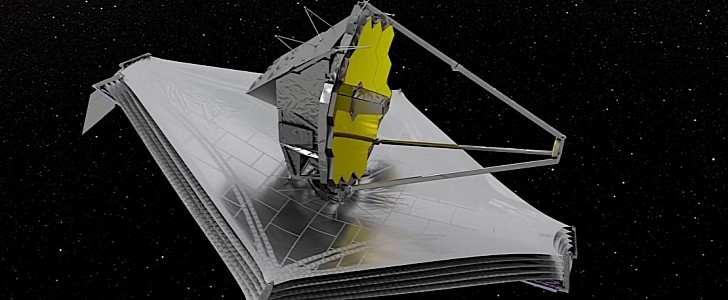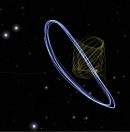For all intents and purposes, the James Webb Space Telescope (JWST) is the world’s most expensive space telescope, with an estimated $10 billion spent to make it. It’s also one of the longest-running space projects in history, with its mission starting some three decades after the Webb idea first surfaced. So, hearing about the thing getting struck by a micrometeoroid must be more than enough to make some people cringe.
Now, needless to say for any space enthusiast out there, such impacts are common occurrences in space, and they are taken into account when a spacecraft is being developed. Yet, given how Webb is a very sensitive apparatus, in essence, a giant floating mirror, it’s best for it to avoid being hit.
Yet, NASA said this week that sometime between May 23 and 25 the telescope was struck by one of these space bullets directly in one of its primary mirror segments. On the bright side, engineers say “the telescope is still performing at a level that exceeds all mission requirements.” What’s not all that great is that “a marginally detectable effect in the data” is there because of the hit.
The design of the telescope’s mirror allows for micrometeoroid impacts, provided they are dust-sized. The one that was just uncovered “was larger than was modeled” while the Webb was being put together, and “beyond what the team could have tested on the ground.”
The space agency says it’s still in the process of analyzing the effects of the impact and warns that such events “will continue to occur throughout the entirety of Webb’s lifetime in space.”
The telescope is expected to deliver its first full-color images and spectroscopic data of what it has already seen in the early days of July. The May impact and its discovery do not affect the operations schedule, as per NASA.
Yet, NASA said this week that sometime between May 23 and 25 the telescope was struck by one of these space bullets directly in one of its primary mirror segments. On the bright side, engineers say “the telescope is still performing at a level that exceeds all mission requirements.” What’s not all that great is that “a marginally detectable effect in the data” is there because of the hit.
The design of the telescope’s mirror allows for micrometeoroid impacts, provided they are dust-sized. The one that was just uncovered “was larger than was modeled” while the Webb was being put together, and “beyond what the team could have tested on the ground.”
The space agency says it’s still in the process of analyzing the effects of the impact and warns that such events “will continue to occur throughout the entirety of Webb’s lifetime in space.”
The telescope is expected to deliver its first full-color images and spectroscopic data of what it has already seen in the early days of July. The May impact and its discovery do not affect the operations schedule, as per NASA.









